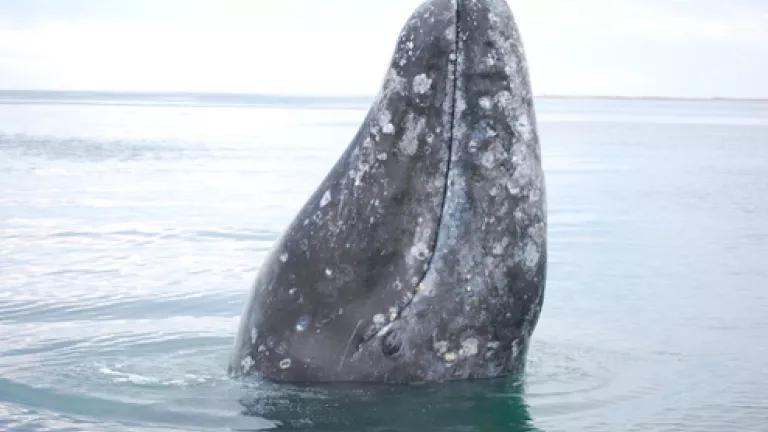
Gray whales love to spyhop. That’s one of the primary lessons of my week in Laguana San Ignacio, one of NRDC’s premier BioGems. On the west coast of Mexico’s Baja California, the lagoon is the last pristine breeding and gathering area for gray whales. I believe it is actually the last pristine spot in the world for any whale.
Laguana San Ignacio is pristine in a way no other place I've seen. As I sat on a small bluff on a chair, I could see only water, the untouched far side (now federally protected thanks to NRDC's advocacy) and whales.
Many many whales. At any one moment, I could see 10 to 15 whale spouts, the backs of one or two whales passing nearby and perhaps one whale "spyhopping."
The whales rise vertically out of the water, entirely silently. They pause with 3, 4, maybe 5 feet out of the water. Hanging completely still. "Doing what," we asked our guide incessantly. The answer: "We don't know … perhaps to get their eyes out of the water to look around."
After popping up, the whales may slide straight back into the water, also silently, or may flop around a bit, but still gently. Only then do they arch their back and spout. Once or twice the whale opened its mouth. (I'd say smiled, but that implies we know why they open their mouths and we don't.) It was when they opened their mouths that we could see the baleen, the gill-like sieves they use to catch the small animals they eat. Hard to imagine such huge beings survive entirely on mud-dwelling critters smaller than my thumb.
While spyhopping is silent, breaching is not. And the gray whales breach a lot. We saw one breach 8 times in a row. Our “panguero” (or boat driver) said the most he's seen was 23 breaches in a row. They raise most of their 40 tons out of the water and come crashing down. The splashes can be seen for miles. We don't know why they breach; perhaps it's like scratching their backs.
But what amazed me most about my week with the whales is that many are friendly. Really friendly. They are curious and come right up to the small boat. They take a look. They push the boat. They sometimes stay just inches out of reach of our hands. But at times they would come close and we could stroke them (not pat them, we were told).
They'd stick around as if they were having fun. One put its snout up right by me and I was able to kiss it (the pangueros say that's the thing to do). Kissing a whale? It's clear that doesn't happen unless they want that. (Their body control is exquisite -- they can put their huge body, flipper or tail exactly as close or as far from us as they want.)
I know the thrill and deep sense of wonder that I got from touching a whale. I wonder what they get from the interaction.
